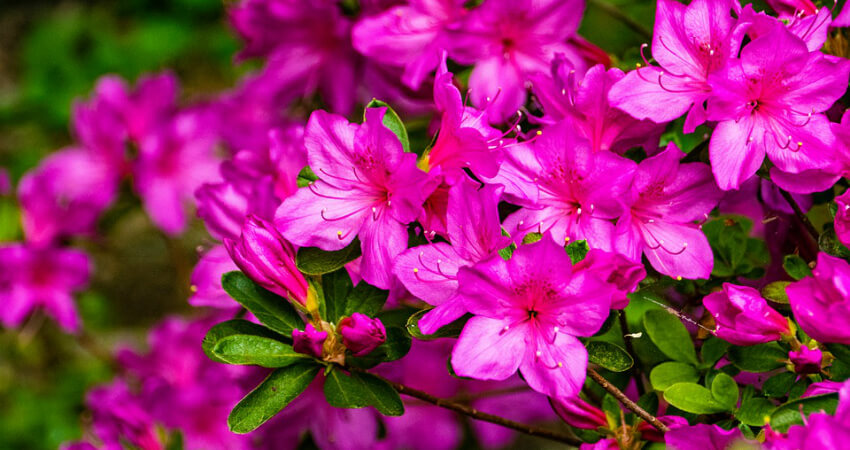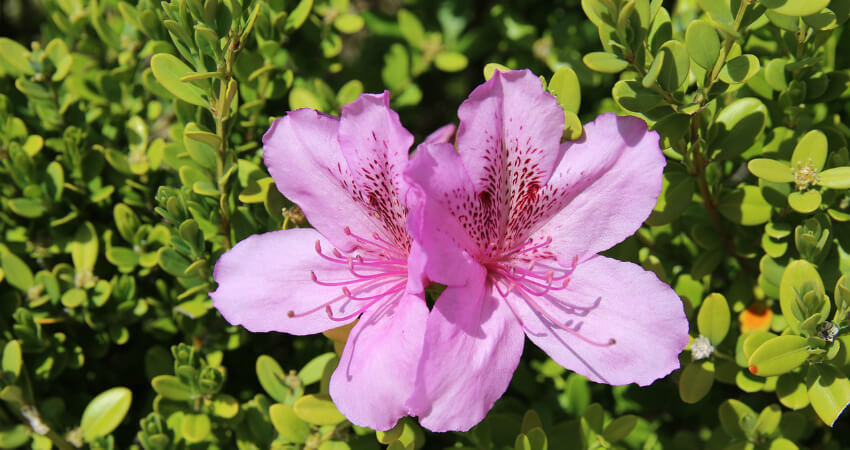These sources for azaleas are listed by nursery name. The Azalea Society provides this information as a service to our members and the public. It does not endorse these sources, and will not be involved in your ordering of plants or other things from these sources.
Rhododendrons and azaleas, both from the genus Rhododendron, have long been mainstays of late spring because of their spectacular clusters of showy blooms—plus, large green leaves that often stay green through winter.
The flowers are tubular-, funnel-, or bell-shaped—and often fragrant. The leaves of the smaller azalea are usually pointed and narrow; the leaves of the rhododendron are generally large and leathery.
Rhododendrons and azaleas, both from the genus Rhododendron, have long been mainstays of late spring because of their spectacular clusters of showy blooms—plus, large green leaves that often stay green through winter.
The flowers are tubular-, funnel-, or bell-shaped—and often fragrant. The leaves of the smaller azalea are usually pointed and narrow; the leaves of the rhododendron are generally large and leathery.
HOW TO PLANT AZALEAS
Plant in spring or early fall.
Space plants 2 to 6 feet apart, depending on their estimated mature size. Dig a hole as deep as the root ball and 2 times as wide.
Set new plants so that their top roots are at soil level or slightly below. If you plant them any deeper, the roots may rot.
Fill the hole half full with soil, then water it well to settle the soil before filling with remainder of soil.


![]()